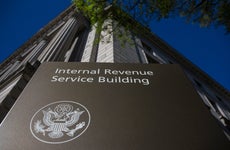2023 real estate return on investment

The Bankrate promise
At Bankrate we strive to help you make smarter financial decisions. While we adhere to strict , this post may contain references to products from our partners. Here's an explanation for .
- ROI is an acronym that stands for “return on investment”
- In real estate terms, this metric identifies the profit earned on a real estate investment after deducting all associated costs
- Two common approaches to ROI are the cost method, which measures investment amount versus outlaid cost, and the out-of-pocket method, which measures equity accumulation versus market value
- A simple equation to calculate it is to subtract your investment cost from your sale price, then divide that number by the investment cost number: ROI = (sale price – cost) / cost
What is ROI on real estate?
ROI is the profit earned from a real estate purchase after deducting the costs of the investment, which typically include the purchase price and any additional expenses associated with repairs or remodeling. ROI is not realized until the property is sold.
One of the most common ways to make money investing in real estate is through appreciation, or when the property grows in value over time. For example, if you purchase a home for $300,000 and, over the course of five years, its fair market value increases to $400,000, that means it has appreciated by $100,000. Let’s say that in addition to the $300K you bought the home for, you also put $20K of improvements into it, and you’re now selling it for $400K. Following the formula above, that’s $400K (sale price) minus $320K (cost), which comes to $80K; $80K divided by $320K is 0.25, so your ROI is 25 percent.
There are many different types of properties to consider investing in, beyond just single-family homes. Condos, townhouses and multi-family homes can also be good investments, and you can even consider investing in tiny houses or ADUs (accessory dwelling units). It’s also possible to invest in land that has no existing structures on it.
Many real estate investors assess ROI carefully before deciding whether to purchase a particular property, in order to have a data-based estimate of how much money they might earn on it.
How is ROI calculated?
ROI = (sale price of investment – cost of investment) / cost of investment
- Resales and cash sales: In cash sales and resale transactions, calculating ROI is often fairly simple. Subtract your total investment cost from your final sale price (often referred to as “gain”), then divide that number by the investment cost number. The result of this calculation is the ROI.
- Rentals: Owning a rental property can generate steady long-term income. Determining ROI for rentals requires first calculating your projected annual rental income and your annual operating expenses, which could include such things as insurance, property taxes, HOA dues and maintenance costs. Your ROI for a rental property can then be calculated with this formula: ROI = (annual operating costs – annual rental income) / mortgage value (i.e., the amount that still needs to be paid on the mortgage loan).
- REITs: REIT stands for real estate investment trust. This passive approach to investing in real estate involves buying shares in an REIT and earning dividends, similar to owning stock. (Some REITs are, in fact, publicly traded.)
How do variables impact the potential ROI on real estate?
The potential profit or ROI for a particular investment can be affected by various external factors. One of the biggest is the overall market conditions at any given time. For example, when there’s limited inventory available, it typically drives up the sale price of properties that are on the market. This type of seller’s market can significantly increase ROI.
The cost initially paid to purchase a home also factors into the profit investors stand to earn when they’re ready to sell. The more you paid for a property, the less money you stand to pocket in the end — unless the value has appreciated significantly.
Prevailing mortgage rates can also impact profits when selling real estate. When interest rates are high or on an upward trend, as they are today, real estate sale prices often decline in order to attract wary buyers. A lower sale price means less profit on the sale.
Location is another factor that can increase or decrease the ROI of a real estate investment. A residential property located alongside a highway, for instance, is likely to command a lower sale price than a property near a park or beach.
The cost of building materials required for construction or renovations is another thing that impacts ROI. When goods such as lumber and other materials are especially expensive, it drives up the amount spent on such projects, which in the end, cuts into profits earned on the property when sold.
What is an average ROI on real estate?
According to the S&P 500 Index, the average annual return on investment for residential real estate in the United States is 10.6 percent. Commercial real estate averages a slightly lower ROI of 9.5 percent, while REITs average a slightly higher 11.8 percent. ROI can vary by property type, as well, so it might work out differently for a multi-family home than it would for a single-family home or an apartment building.
Other metrics to calculate investment profitability
Potential investment profitability can be assessed in several ways, and it’s not unusual for investors to combine multiple metrics to create a more complete picture. Other common metrics include:
- Capitalization rate: This measures the annual, debt-free rate of return from a rental property. The formula involves three variables — net operating income, property value or price and rate of return — any one of which can be calculated using the other two.
- Internal rate of return: IRR requires a more complicated calculation than ROI, and it measures the annual rate of return over a particular time period, rather than over the total time of ownership.
- Cash-on-cash return: This simple formula compares annual pretax cash flow from a property to the total amount of cash invested. Cash-on-cash calculations typically measure returns over a very specific time frame, such as one year.
How many mortgages can I get to buy investment properties?
In 2009, Fannie Mae increased the number of mortgages allowed to one borrower from four to 10. However, most lenders will be very wary of extending that many loans to a single individual. Very few loan programs actually allow more than four mortgages in practice. And to qualify for that many, you will need to meet specific criteria. These include having a solid credit score and a loan-to-value ratio of 75 to 80 percent. Lenders will also want to see that any existing real estate investments on which you hold mortgages are performing well.
FAQs
-
The state with the highest one-year ROI on residential single-family homes is Arizona with 27.42 percent, according to iPropertyManagement data. The next two highest states are Utah with 27.05 percent and Idaho with 27.02 percent.
-
Return on investment is variable and depends on a lot of factors — there’s no one-size-fits-all answer for what is considered a “good” ROI. The average annual ROI for residential real estate is currently hovering around 10 percent, so anything above that can be considered better than average.
-
If real estate investing is of interest to you, there are several steps you might take to get started. First, think about what kind of investor you want to be. Are you looking to be active and hands-on, such as fixing up properties and flipping them? Or do you prefer a more passive approach, like investing in an REIT? Additional steps to get started include researching the market you plan to invest in and learning about local real estate laws.
Related Articles


Second home vs. investment property: Different mortgage requirements and rules

